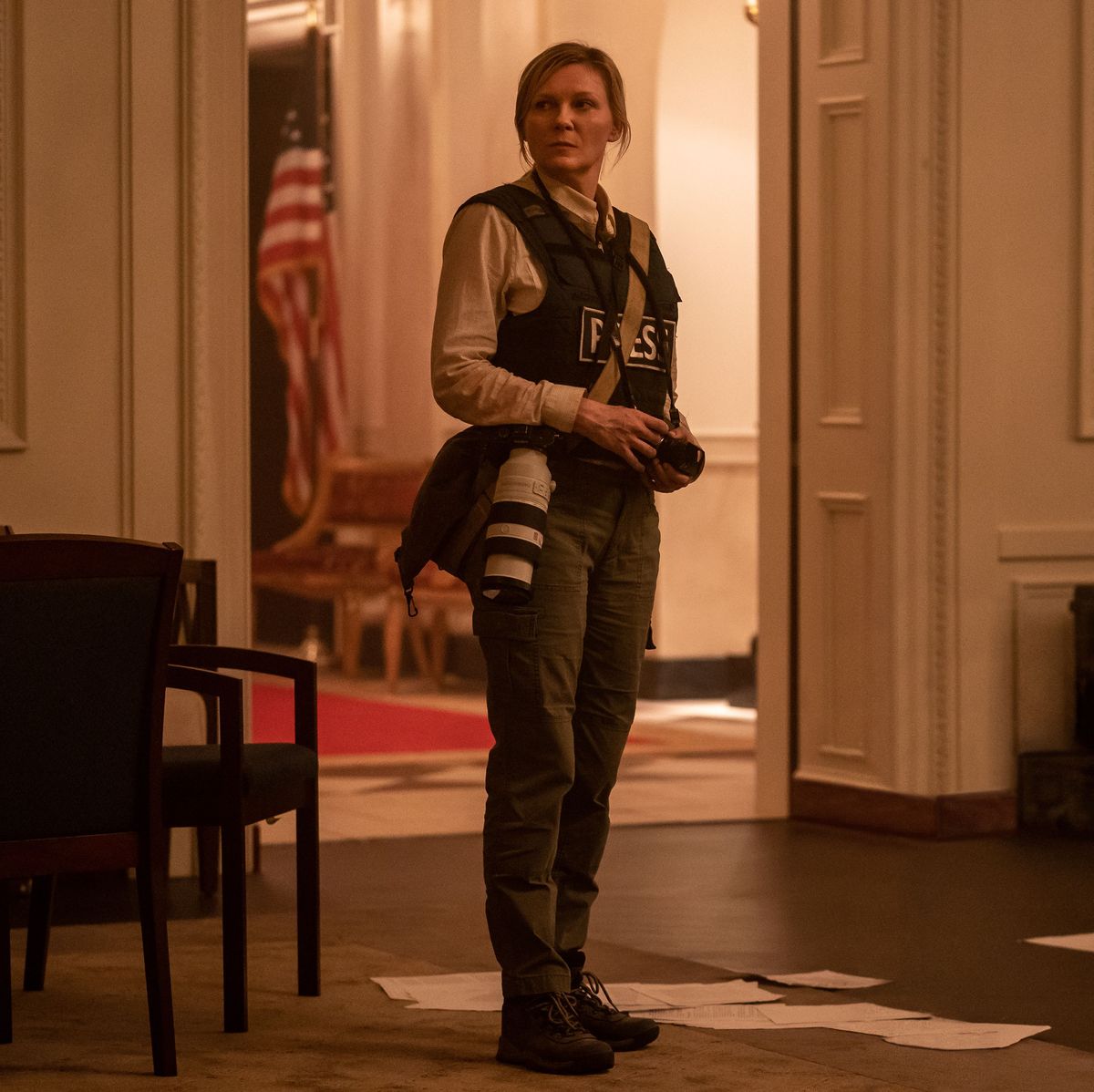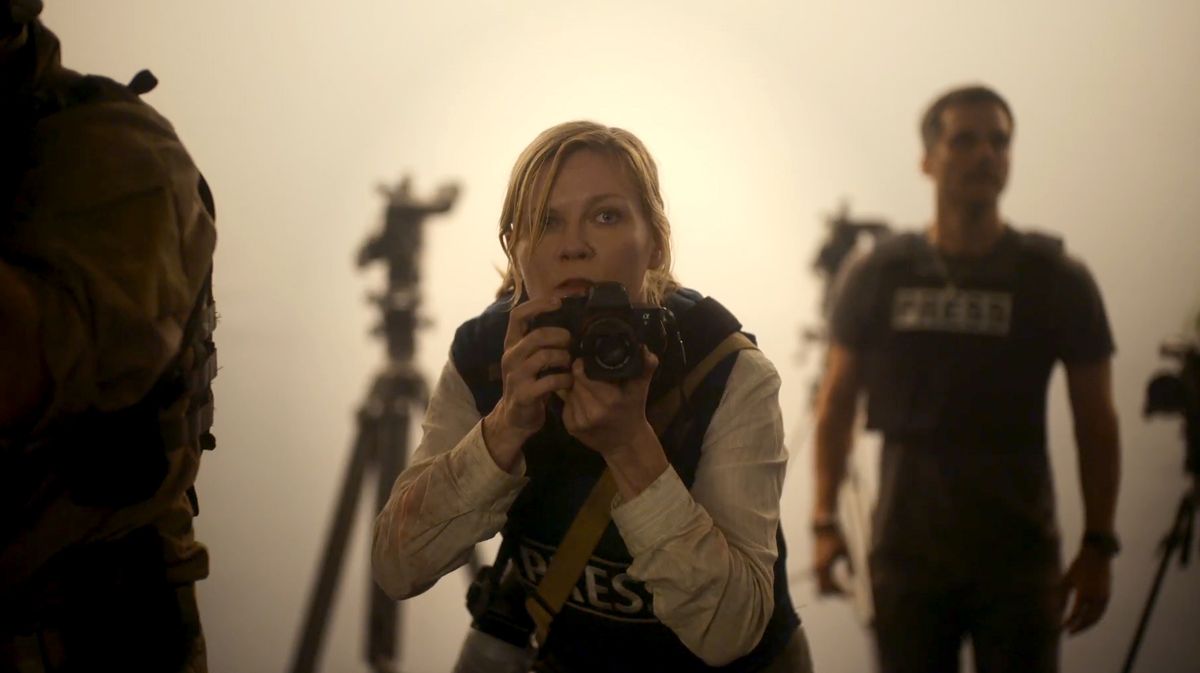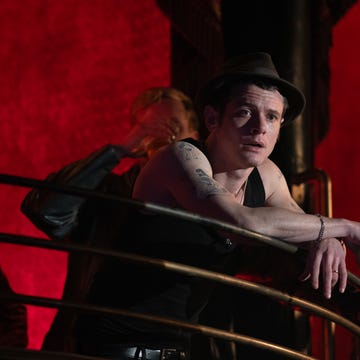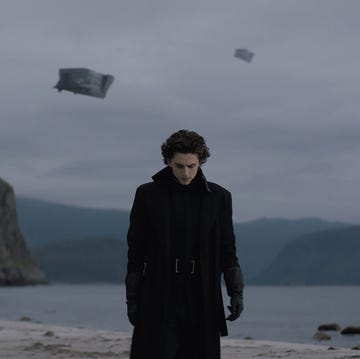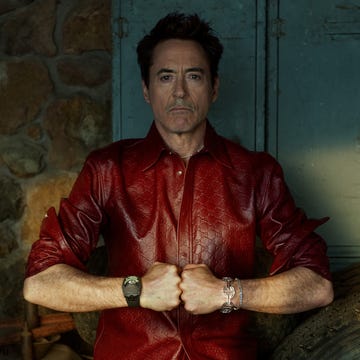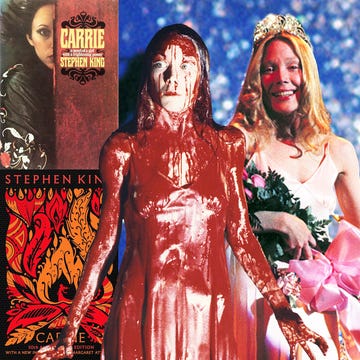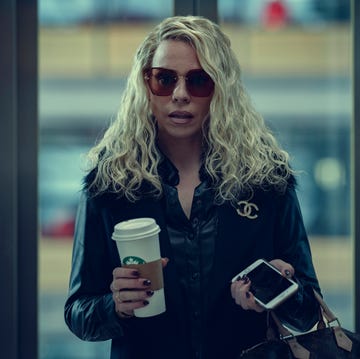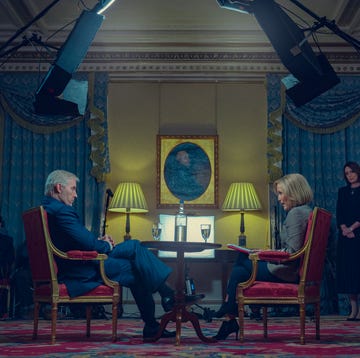What do you expect from a film named Civil War? Or, more precisely, what do you expect from a film named Civil War at a time like this? Heading into the latest film from writer-director Alex Garland, I was worried – nay, pre-exhausted – by the prospect of a state-of-a-divided-nation treatise about our ongoing political polarisation. Isn’t it terrible that these things divide us? Should we make a movie about that? (Those questions do not have the same answer.) The trailer, crammed with war imagery and explosions, did little to assuage such fears. And then there is the poster, with Lady Liberty’s flame snuffed out and stuffed with sandbags and snipers, a whiff of Cloverfield, hinting that perhaps this is your standard dystopian sci-fi flick. What a glorious fake-out that this film is not overly concerned with politics or the end of the world but photojournalism.
We are in a near-future United States. 19 states have seceded from the Union, while Texas and California have joined forces against a three-term president who has dissolved the FBI and ordered drone strikes on civilians. Florida has also recently joined that new pairing, known as the Western Forces, which is close to overthrowing the government. Lee Smith (Kirsten Dunst, never better) a war photojournalist in the vein of her namesake Lee Miller, is working with Reuters journalist Joel (Wagner Moura) on their biggest mission yet: to photograph and interview the president, played by Nick Offerman.
Joining the cross-country road trip is aspiring photographer Jessie (Cailee Spaeny, who played the title role in Sofia Coppola’s Priscilla) and Sammy (Stephen McKinley Henderson), an older, disabled journalist working for “what is left of the New York Times”. Garland’s pacing is exceedingly confident, as he moves from set piece to set piece, missing no opportunity to dress up (or should that be down?) familiar American sights in war-torn costumes. Men hang from carwash ceilings, burnt-out helicopters lie abandoned outside JCPenney’s. De La Soul blasts while war breaks out. Garland, who turned London into a graveyard with his 28 Days Later script, relishes at subverting, or just outright destroying, familiar sights. The Englishman does all this with an inventive, carefree vision, despite being an outsider. Or maybe he is able to achieve this precisely because he is not American.
I suppose you could argue that it is Garland’s Englishness that makes the politics a little vague. One accusation, largely levelled by American commenters, is that it is unlikely that Republican Texas and Democratic California (to paint a very broad brush) would ever unite. But it quickly becomes apparent that the film’s politics are deliberately blurry. We do not know to which political party the president belongs; we don’t really discover what caused the civil war in the first place (though we do learn that Lee rose to fame from an iconic image taken at “the Antifa massacre”). It is enough to believe that such a civil war could take place, and any anyone who has observed events in America, the UK or Europe in the last decade will not find this hard. Garland is much more interested in world-destroying than world-building
What emerges from those expectations is a road movie about which sides we take though the, ahem, lens of photojournalism. Conversations between Lee and her protégé Jessie delineate the issues: you do not take sides, and you never interfere during a conflict. Would Lee save Jessie if she were in danger? “What do you think,” Lee answers. It is not a question. This theme is fruitful – you can almost hear how pleased Garland must have been in some of the script’s more smug moments – and as we swerve from vague to precise, the film becomes a little on-the-nose. During shoot-outs, Lee uses her camera, as a sniper would a scope, to find the aggressor. You will work out the natural end to photographer-as-soldier about two thirds in, but when that moment comes, during a White House shoot-out, it just about works. And photographs are a good motif: an exact replica of a moment that can be manipulated to fit any side. (One of Lee’s fears is that her esteemed body of work has failed to do any good: “Every time I survived a war zone, I thought I was sending a warning home, ‘don’t do this.’ But here we are.”)
Dunst is terrific, cruising through the alarming, escalating, actually-too-much violence with a permanent shrug. The sullen expression which epitomised her adolescent roles (The Virgin Suicides, Marie Antoinette) has been replaced by something steelier, though of course that hides inner turmoil: in moments alone, she is plagued by visions of her past photographic expeditions. Dunst’s real-life husband, Jesse Plemons (with whom she starred in 2021’s The Power of the Dog), plays a chilling character who kills passers-by in his well-maintained garden. The country is now populated by such militants, political affiliation unknown, who have seized the opportunity to be terrible people. “What kind of American are you?” he barks at them, wielding a rifle. Good question. In this film, it is impossible to answer.
The trick is that by avoiding clearly-defined politics, the film forces you to think about your own. I was reminded of so much discourse around hot-button issues where we nail our flags to the most acceptable (in our view) mast. We like to think of ourselves as rational and reasonable observers of the world, convinced by the strength of an argument rather than the whims of whatever identity we have created for ourselves. But who among us has not read some vitriolic opinion piece and wondered: am I supposed to agree with this? We rely on traditional signifiers: a publication’s political leaning, an assemblage of hashtags in a bio. Civil War strips such identifying markers, implicates everybody (including you!) and throws all of us into the battlefield headfirst.
‘Civil War’ is in cinemas 12 April
Henry Wong is a senior culture writer at Esquire, working across digital and print. He covers film, television, books, and art for the magazine, and also writes profiles.
